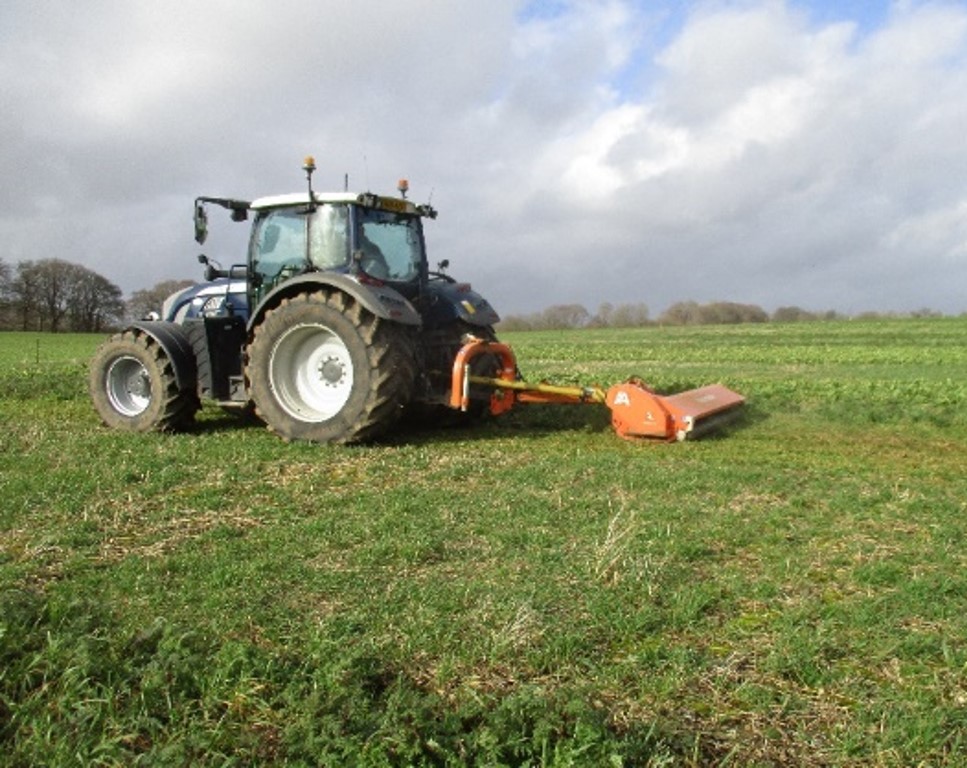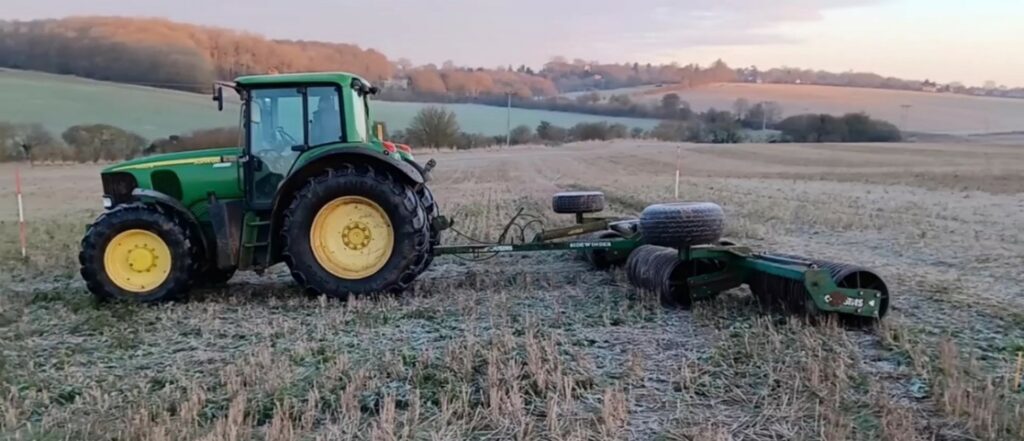Rachel Thorman and Anne Bhogal, ADAS
Cover crops are grown primarily to ‘protect or improve’ soils between periods of regular crop production. Whilst the benefits of cover crops for erosion control and reduced overwinter nitrate leaching losses are well established, the legacy effect for subsequent crops in the rotation is unclear. Of particular relevance is the timing of nitrogen release from cover crop residues and how this influences the nitrogen fertiliser requirement of the following cash crop and subsequent nitrate leaching losses.
The Nitrogen release from Cover Crops (NiCCs) project, funded by Affinity Water and Portsmouth Water and delivered by ADAS, evaluated the effect that cover crop species choice and different destruction methods had on nitrogen release into the following crop and beyond.
Trials were undertaken over two cropping seasons on commercial farms in Hertfordshire and West Sussex with two cover mixes and a weedy stubble control. The two cover crop mixes were:
Mix 1: Phacelia (20%) & Oil Radish (80%) @ 15 kg/ha
Mix 2: Japanese oats (45%), Buckwheat (45%) & Phacelia (10%) @ 10 kg/ha
The cover crops were then destroyed either mechanically by rolling on a frost, chopping and incorporating, or with chemicals.
The results showed that cover crops reduced nitrate leaching losses by up to 90% when compared to the weedy stubble control. Leaching losses were dependent on over winter rainfall, the amount of cover achieved and cover crop type with the cover crop mix containing the fast growing, nitrogen scavenging oil radish giving the greatest benefit in reducing leaching losses.

The reduction in nitrate leaching losses by the cover crops increased soil nitrogen supply in the spring by up to c.35 kg N/ha. If all the nitrogen in the above ground cover crop would become available to the following cash crop, a decrease in the nitrogen fertiliser requirement of the cash crop would potentially be justified. This justification was dependant on the amount of cover crop biomass and nitrogen uptake, so cannot be guaranteed in all situations.
It was evident from topsoil mineral nitrogen measurements taken following spring cover destruction, that cover crops released more nitrogen during decomposition (mineralisation) than from the weedy stubble control, reflecting the greater nitrogen uptake over winter by the cover crops.
Chemical destruction of over winter cover using glyphosate increased the amount of topsoil mineral nitrogen compared to mechanical destruction, regardless of the method used i.e. rolling on a frost or chopping. It is probable that glyphosate breaks down vegetation more rapidly allowing mineral nitrogen to become available for use by the following spring cash crop earlier than with mechanical destruction.
Mechanical destruction of over winter cover by chopping had limited effectiveness in destroying oil radish (& its below ground tap root) where it was used in a cover crop mix. The resultant oil radish regrowth required a more robust post emergence herbicide for control in the subsequent spring cash crop.
Although there were different spring cash crops grown at the 2 sites, crop yield, grain nitrogen offtake and total crop nitrogen uptake were consistently reduced where the covers had been destroyed mechanically (rolling on a frost or chopping) than by using glyphosate. Spring oat yields were reduced by 0.7 t/ha where the cover crop was destroyed by rolling on a frost, and spring barley yield was reduced by 1.0 t/ha following chopping of over winter cover.

Across both sites, cover crops had a positive effect on the yield of the following spring cereal. The mean spring oat yield was 0.2 t/ha greater where cover crops had been used compared with a weedy stubble control, and cover crops resulted in an increase in the spring barley yield of 0.5-1.0 t/ha.
This study showed that it was more cost-effective to not grow a cover crop and destroy any weeds chemically, although the margins over and above growing a cover crop (with chemical destruction) were small and did not take account of any environmental incentive a farmer might receive for growing a cover crop (e.g. SFI). The study has clearly shown the importance of such incentive schemes to support cover crop use so that ‘harder to monetise’ benefits such as improved water quality, soil health and biodiversity can be realised. There is also the potential to reduce fertiliser nitrogen inputs following cover crops, although further work is required to more fully understand the level of reduction possible.


